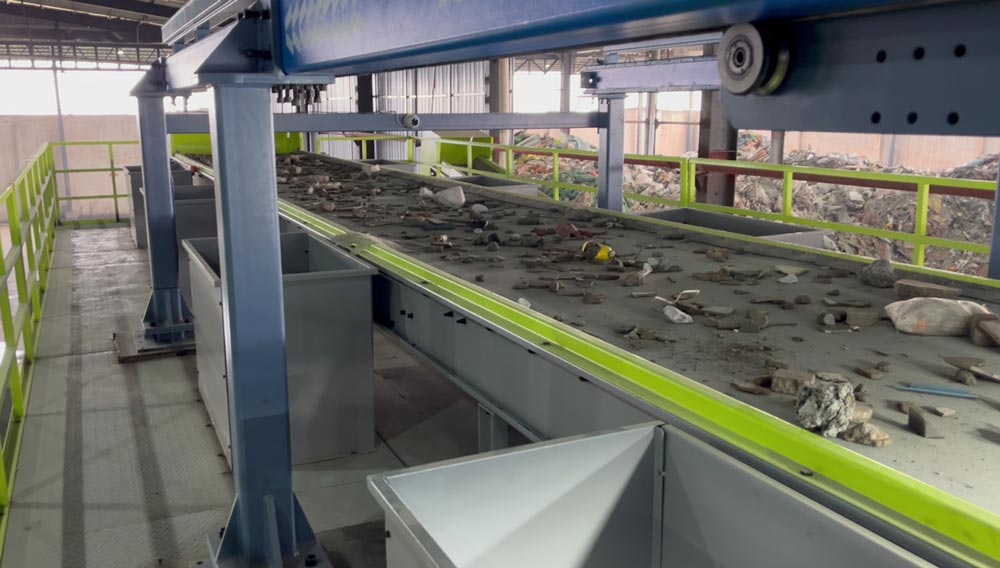 Time:2025-04-28
Time:2025-04-28
 Source:青绿环境
Source:青绿环境
With the acceleration of urbanization, construction and decoration activities have become increasingly frequent. The large amount of waste generated from these activities poses significant environmental pressure. Traditional waste management methods are inefficient and fail to meet the modern society's requirements for environmental protection and resource recycling. Against this backdrop, the construction and decoration waste sorting machine has emerged as an essential component of modern urban environmental protection measures.

I. Technical Principles
The construction and decoration waste sorting machine primarily employs physical separation methods to classify mixed construction waste by material type. Its working process typically includes several stages: pre-crushing, screening, magnetic separation, and air separation. Initially, large pieces of construction waste are crushed into smaller particles by a pre-crushing device to facilitate subsequent processing. These particles then undergo a series of screening processes to separate them based on size. Next, magnetic separation technology is used to remove metallic components, such as rebar. Finally, air separation techniques further distinguish lightweight materials (e.g., wood, plastic) from heavy materials (e.g., bricks, concrete), achieving efficient classification.
II. Advantages and Features
1. Enhanced Resource Utilization: Precise classification allows waste building materials to be reused. For example, old bricks and stones can be recycled into new building materials or used for road subgrade construction; discarded wood can be used to produce composite panels.
2. Reduced Environmental Pollution: The machine significantly reduces the volume of construction waste sent to landfills, decreasing land occupation and potential soil and water pollution.
3. High Degree of Automation: Equipped with advanced sensor technology and automated control systems, the machine can operate with minimal or no human intervention, greatly improving work efficiency and reducing labor costs.
4. Strong Adaptability: Whether it is waste from large-scale construction projects or small-scale home renovations, the machine can handle it efficiently, demonstrating strong versatility.
III. Application Prospects
As environmental awareness grows and national support for green buildings increases, the application prospects for construction and decoration waste sorting machines are very broad. They not only help solve environmental issues caused by construction waste but also promote the development of a circular economy. In the future, with technological advancements, these machines are expected to achieve greater breakthroughs in intelligence and precision, contributing more to building a beautiful environment.
In summary, the construction and decoration waste sorting machine is an important tool for promoting sustainable development in the construction industry. By scientifically and effectively utilizing such equipment, we can not only mitigate the environmental impact of construction waste but also achieve efficient recycling of resources, working together to create a better living environment.













 Prev
Prev











